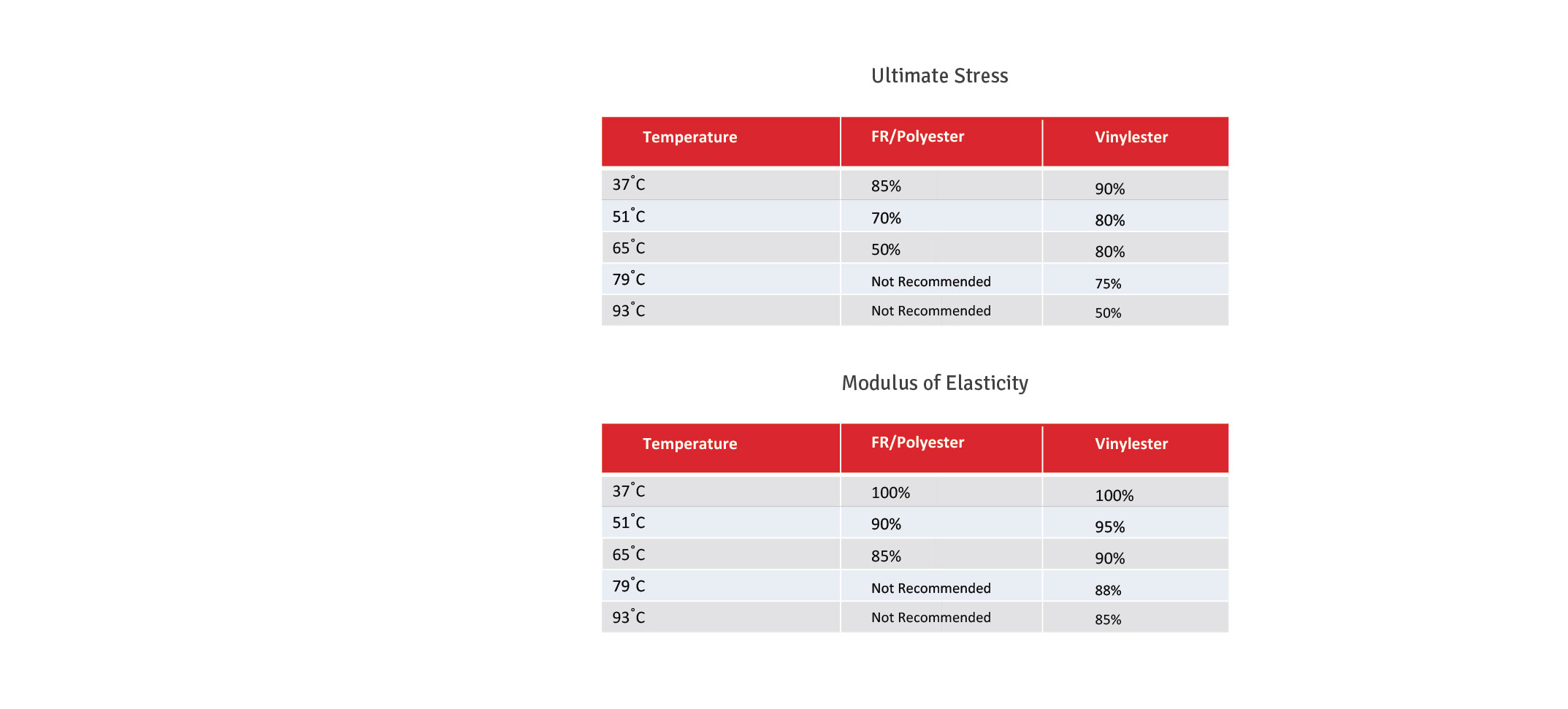
Temperature
Vinylester and polyester fibreglass pultrusions, when kept under direct exposure to the elevated temperatures, tend to lose a certain portion of their properties.
The table below shows the percentage of property retention when exposed to certain continuous temperatures.

Weathering
A little known fact is that FRP will experience some form of visual degradation when exposed to the external elements.
Generally, the surface of ArchitEX™ Pultrusions have strong water and ambient temperature resistance but are susceptible to ultra-violet (UV) light. UV light is defined as the light spectrum between 290 and 400 nanometres. This light poses significant degradation to polymers by breaking chemical bonds or starting chemical reactions as it dissipates higher energy. The fire retardant polyester formulations contain a halogen which makes these plastics typically more prone to UV light degeneration.
Wear that has been caused by UV light can be visually determined by ‘fade’ and ‘yellowing’ on the pultrusion surface. After periods of exposure, glass fibres closest to the surface will exposed. This state is known as fibrebloom and does not directly or immediately affect the physical properties of the section.
Treadwell adds a UV stabiliser into the resin formulation for prevention. This is especially important as products experience extreme exposure in the Pacific region. Also to ensure that our pultruded products endure an extended lifespan, we use high quality polyester surface veils to ensure that the structural component of the composite is sheltered as well as possible from damaging and corroding elements.
A selection of exterior coatings to enhance aesthetics is also offered with the ArchitEX™ range. If a Urethane coating is applied, this will also provide a hugely effective protection barrier to outdoor weathering.

